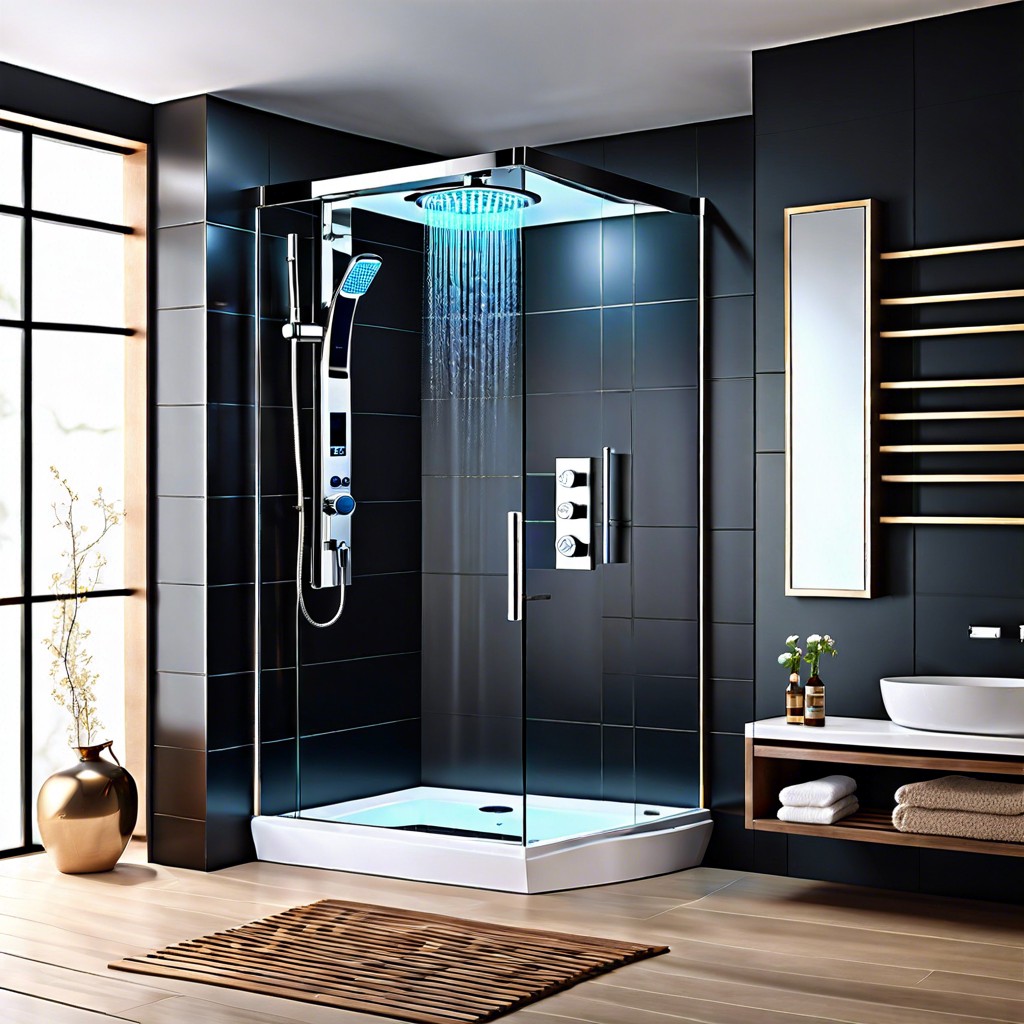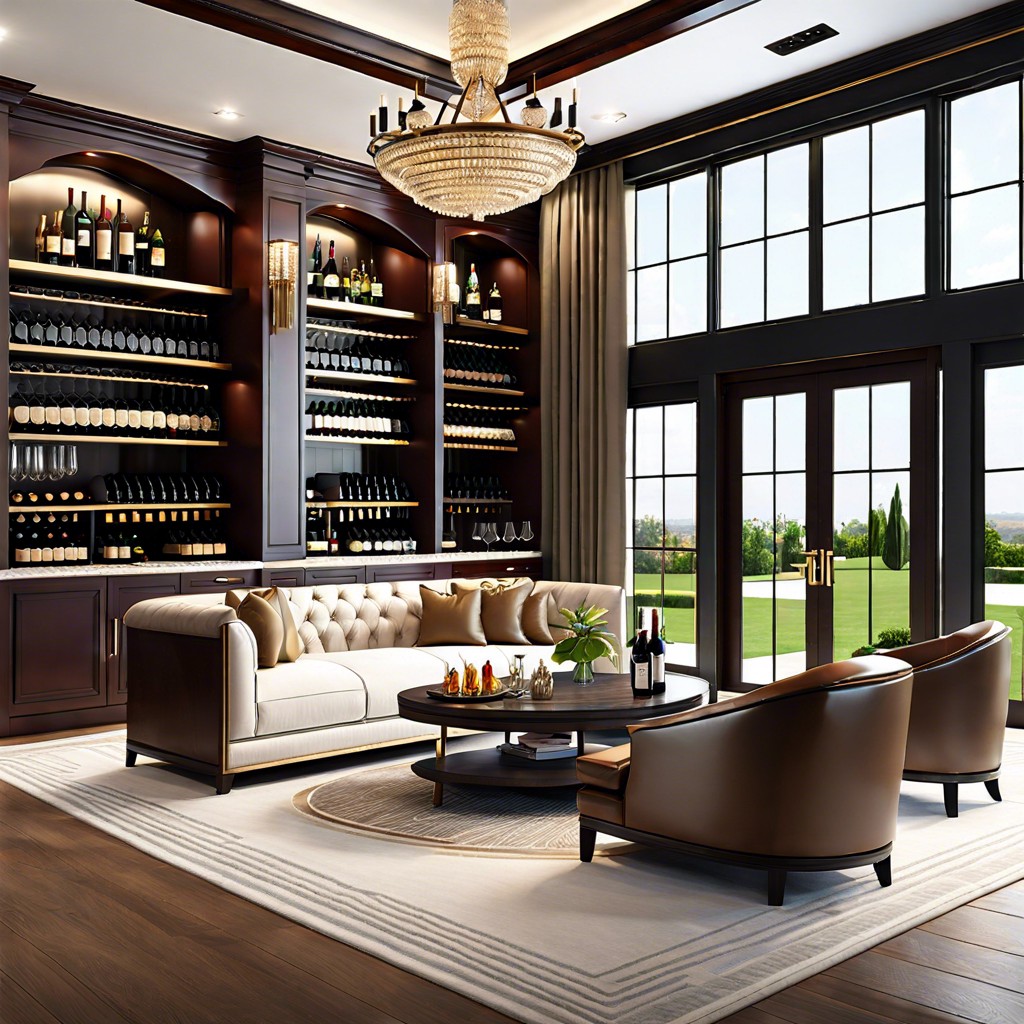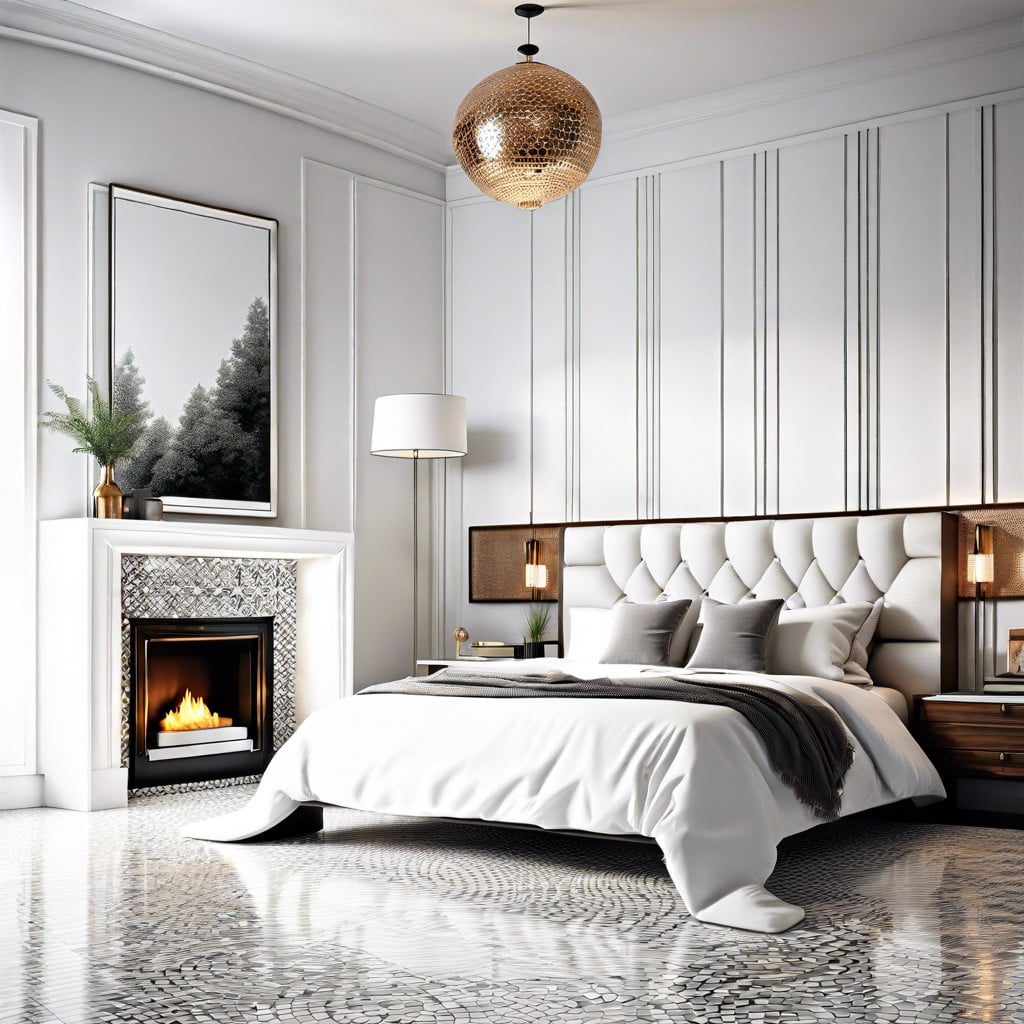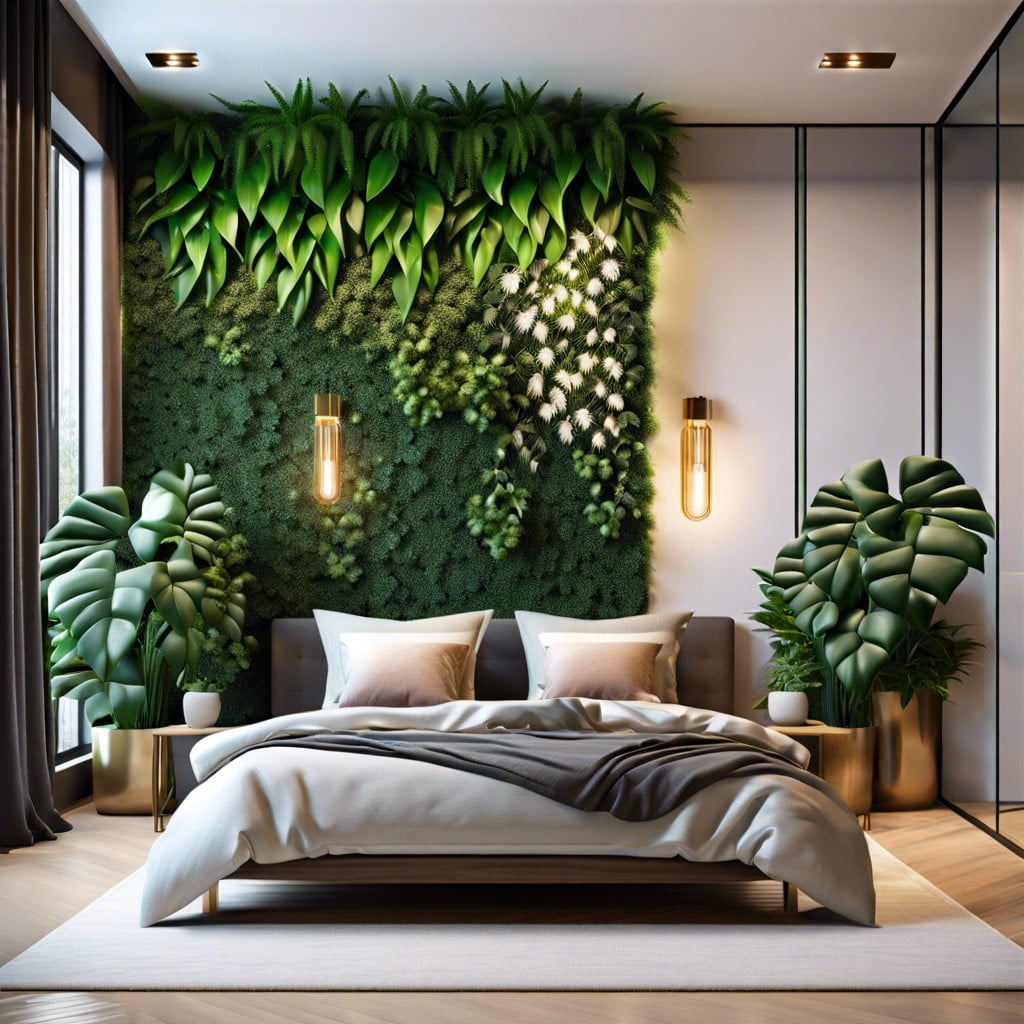Embrace the enchantment of quiet luxury interior design because it amplifies the sophistication of your home in an understated yet impactful way.
I’ve made these unique never seen before designs to inspire you!
Quiet luxury interior design is gaining in preference among homeowners who value subtlety, comfort, and exceptional quality over flash and sizzle. This trend emphasizes the intrinsic value of materials, attention to detail, and an intimate connection with the environment. It’s all about investing in quality over quantity, not for ostentation, but for comfort and longevity.
This design concept manifests in many ways, each unique but with common themes. Exquisite materials, understated sophistication and an overall sense of tranquillity are definitive characteristics of quiet luxury design. Let’s delve into some unique design ideas that embed these facets into your living space.
1. Monochromatic Peace
A design route few tread, this concept uses different shades of a single color to provide depth while maintaining a sense of peace and tranquillity. When paired with a well-balanced mix of textures and materials, the effect is quietly stunning.
2. Minimalist Luxury
Minimalism doesn’t have to mean austere or boring. Choose a select few quality pieces—handcrafted furniture, an artwork, bespoke detailing—and allow them the space to shine. Design integrity is prioritized over quantity or display.
3. Quality Over Flash
Quiet luxury emphasizes enduring quality over momentary trends. Invest in artisanal handcrafted décor or timeless furniture pieces that will weather well over time. Mixing high-quality antiques with modern pieces can give a room an unmatched personality.
4. Natural Luxury
Design that incorporates natural elements—wood, stone, greenery—creates a seamless connection with the environment, increasing the soothing factor inside your home.
Of course, numerous ideas already exist on this topic. Towards the end of this article, you can find resources to guide you through some of the best existing ideas for quiet luxury interior design. Yet, the goal here is unveiling fresh perspectives and sparking creative thought. It’s about broadening views on what quiet luxury can be, helping you craft a home that is refined, understated, and deeply comforting—a vessel of quiet luxury.
Incorporating Nature Into Quiet Luxury Design
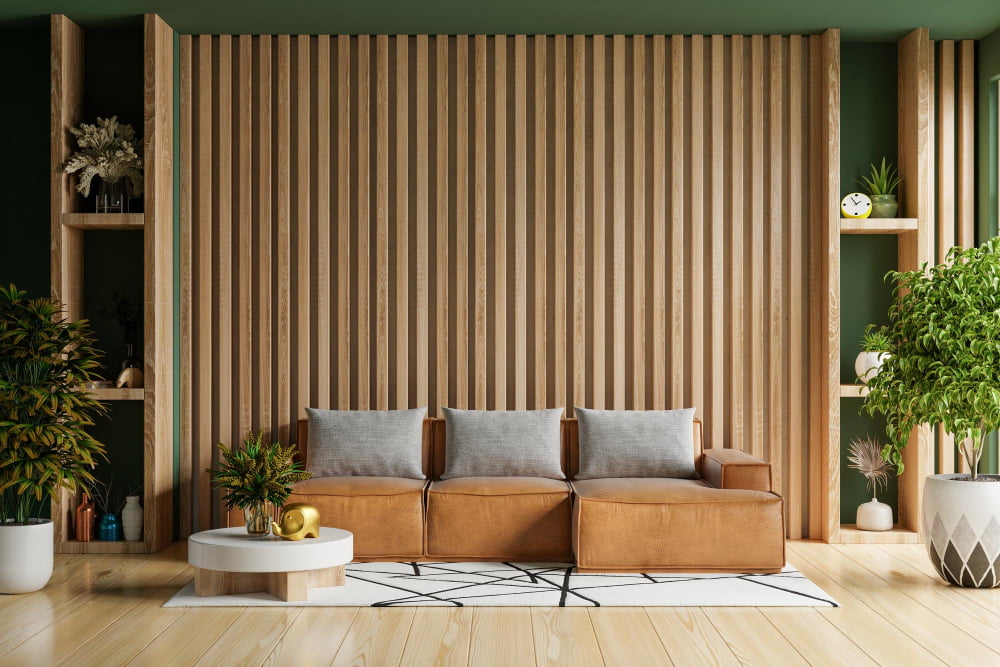
Biophilic design principles complement quiet luxury aesthetics flawlessly. The concept stems from the innate human desire to connect with nature. Fusing this ideology into a luxe environment means inviting fresh greenery, including potted plants and flower arrangements, into the setting.
Opting for sustainable materials like wood, bamboo, or natural stone for furniture and fixtures not only increases environmental friendliness but also amplifies luxury through their bespoke quality. Picture an authentic teak dining table, a polished marble countertop, or a quirky bamboo lampshade – rare and naturally beautiful items that shimmer with understated opulence.
Experience the elegance of natural light. Smartly placed skylights, expansive floor-to-ceiling windows, or even light shafts not only brighten up rooms but create subtle plays of shadow and light during different times of the day. Reflections or natural light off lustrous surfaces add a level of splendour difficult to emulate artificially.
Layer in natural textures via rugs, cushions, or upholstery made from linen, wool, or silk. These elements provide a tactile experience, carrying forward the sensory connection with nature, subtly anchoring our senses in comfort and luxury.
By thoughtfully integrating natural elements in the design, one can achieve a luxurious ambience while retaining an organic, calming atmosphere, elevating the classic definition of quiet luxury interiors.
Revealing the Quiet Luxury Aesthetic Through Artwork
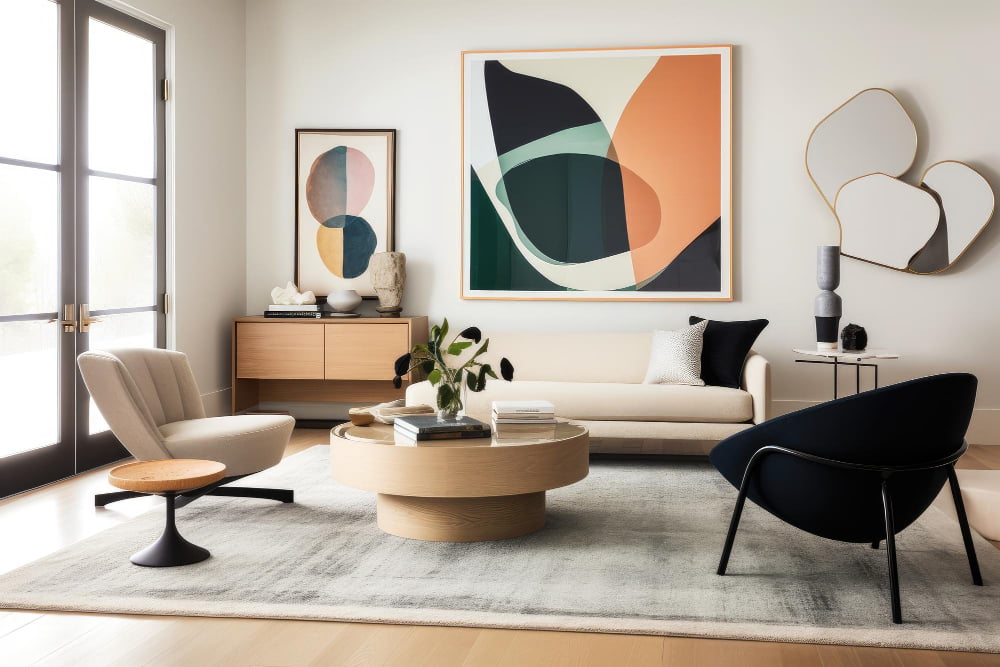
Art in its various forms and mediums can be the lynchpin of stirringly tranquil spaces. It sets the mood and serves as a captivating focal point, anchoring the room. However, subtlety is key here.
Consider selecting pieces that echo the color scheme of your space, rather than standing in stark contrast. This promotes a sense of harmony, tying the room together. Think gentle watercolors, abstract oil canvas, or muted monochromatic prints.
Similarly, opting for traditional rather than contemporary frames often complements the quiet luxury more, as they tend not to distract from the art piece itself. Remember, premise of this design aesthetic lies in understated elegance, so ornate, flashy elements tend to detract rather than add.
Size matters too. A single oversized piece paired with minimal yet high-quality furnishings often creates a luxurious yet tranquil look. Alternatively, a well-curated display of smaller pieces can evoke a similar effect if done with care and precision, ensuring a well-thought arrangement and spacing.
Lastly, the choice of art should align with personal preferences and speak to the occupants, as this essence of comfort and familiarity contributes significantly towards quiet luxury.
Overall, art should enhance the tranquil elegance that quiet luxury epitomizes, setting an enigmatic yet soothing atmosphere. It personifies the beauty of limitation, marking the space as a haven of serenity and elegance.
Why Black and White Are Staple Colors in Quiet Luxury
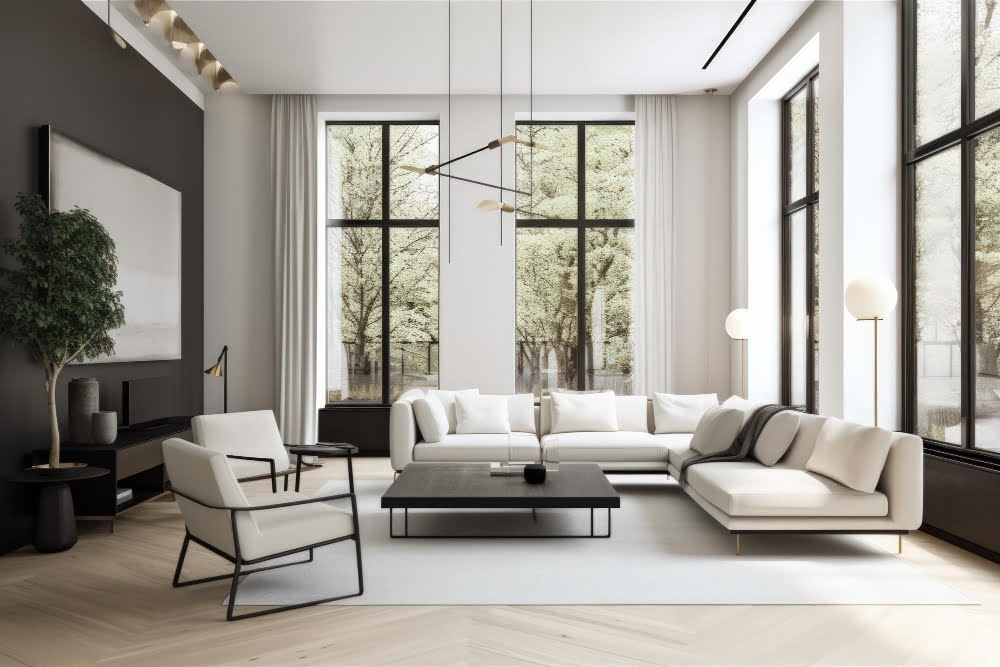
These two contrasting colors perfectly embody the antithesis of opulence and simplicity inherent in quiet luxury. While black adds depth and sophistication, white introduces tranquility and cleanliness. Around them, other design elements can unfold subtly.
1. Always present, black serves as the anchor that grounds the design, providing striking counterpoints and added dimension.
2. The wide palette of whites, from stark to cream, gives a sense of cleanliness and spaciousness that’s crucial to the minimalist aspect of quiet luxury.
3. The balance between these two colors promotes harmony – a key facet of quiet luxury. Neither overwhelms the other; creating a calming, visually pleasing environment.
4. Their versatility allows them to seamlessly interact with other elements of design such as texture, form, and patterns.
5. Moreover, they provide a perfect backdrop for artwork, giving it the spotlight without competing for attention.
6. The timeless nature of black and white assures longevity in design, resonating with the concept of quiet luxury that values enduring appeal over temporary trends.
Acting in synergic equilibrium, black and white form the building blocks of visual composition in quiet luxury design, creating a dance of tone and contrast that emanates an unconventionally silent grandeur.
The Role of Proportion in Quiet Luxury Interior Design
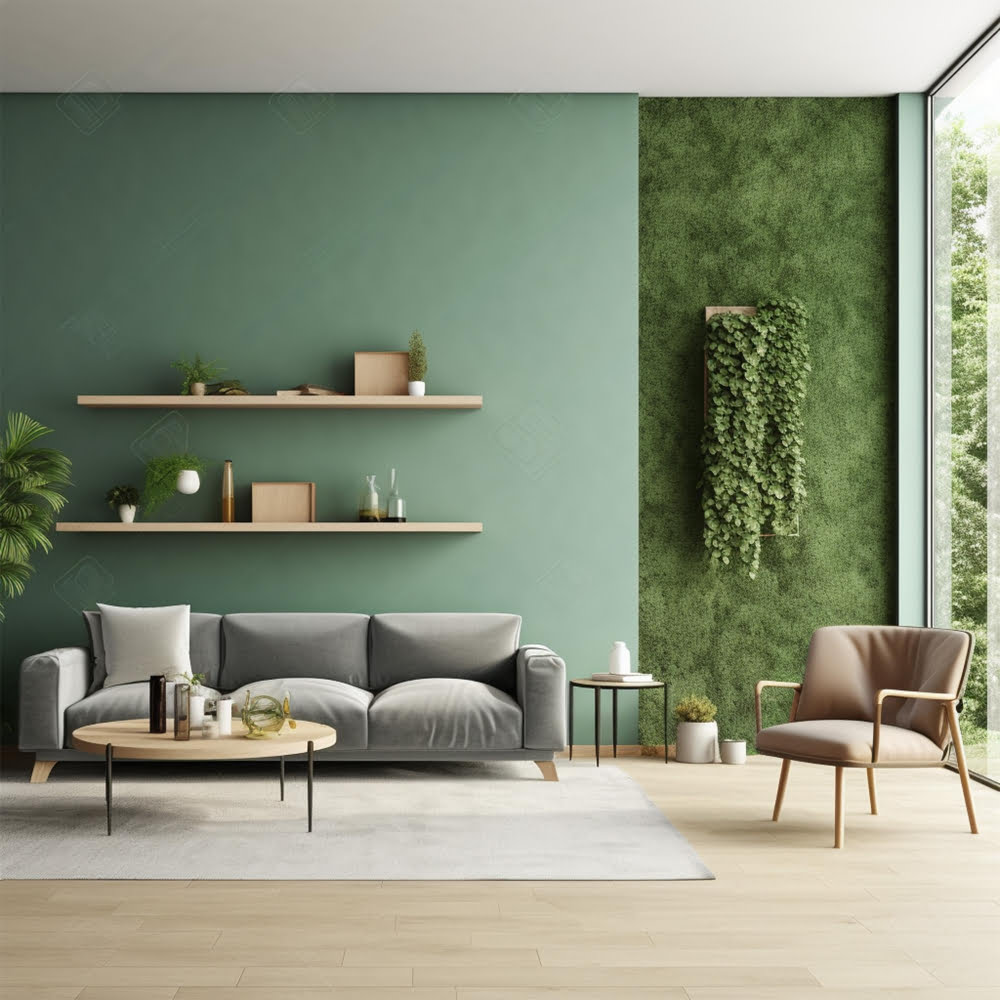
To achieve sublime harmony in design, one must master the concept of proportion. Essentially, it refers to the balanced relationship between different elements. In quiet luxury, the enforcement of proportion takes the center stage. Here are a few key points about its role:
1. It ensures all elements relate well to each other: Be it between different furniture pieces or among the furniture and room’s layout, proportion guarantees that every element is in sync with the other.
2. It amplifies simplicity and elegance: The intentional positioning and size of every furniture piece or decor emphasizes the opulence in simplicity, a fundamental principle of quiet luxury.
3. Attentiveness to scale creates ample space: While smaller pieces add interest, larger pieces secure the grounding. The balance in their size and their position can offer a sense of ample space, promoting relaxation and tranquillity.
4. It strengthens the concept of “less is more”: Proportion eliminates unnecessary clusters. Each piece of furniture and decor serves a purpose and is positioned in the most optimal way possible, embodying the concept of minimalism.
The subtle art of playing with proportion is certainly an integral part of quiet luxury interior design. The balance it brings radiates a sophisticated elegance, making the space feel both luxurious and serene.
Quiet Luxury Design: The Importance of Empty Space
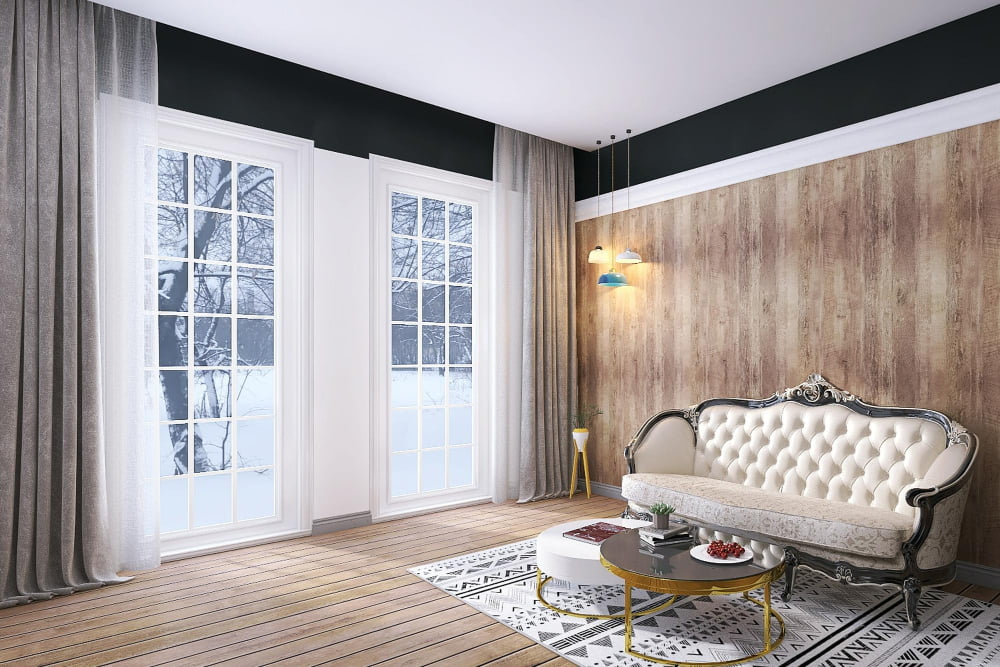
Empty space in quiet luxury design is the embodiment of less is more. Maintaining uncluttered areas allows individual pieces to shine and draws attention to elegant design features.
Here are some factors to consider:
- Balance: In every room, balance the furniture and décor to avoid overwhelming the space. An empty wall can counterbalance a wall with a large statement piece.
- Harmony: To create harmony, ensure that the empty spaces flow seamlessly with the decorated areas. This ebb and flow contributes to a sense of tranquility.
- Focus: Absence of clutter keeps the focus sharply on the luxurious elements, whether it’s a high-end sofa or a fine piece of artwork.
- Comfort: Spaciousness enhances comfort, making rooms feel light and airy.
- Simplicity: Quiet luxury should be easy on the eyes. Avoid cramming too many elements into one space.
Remember that it’s about creating a room that feels complete, even with empty space. This artful subtraction adds sophistication and elegance to your interior.
Balancing Minimalism and Comfort in Quiet Luxury Design
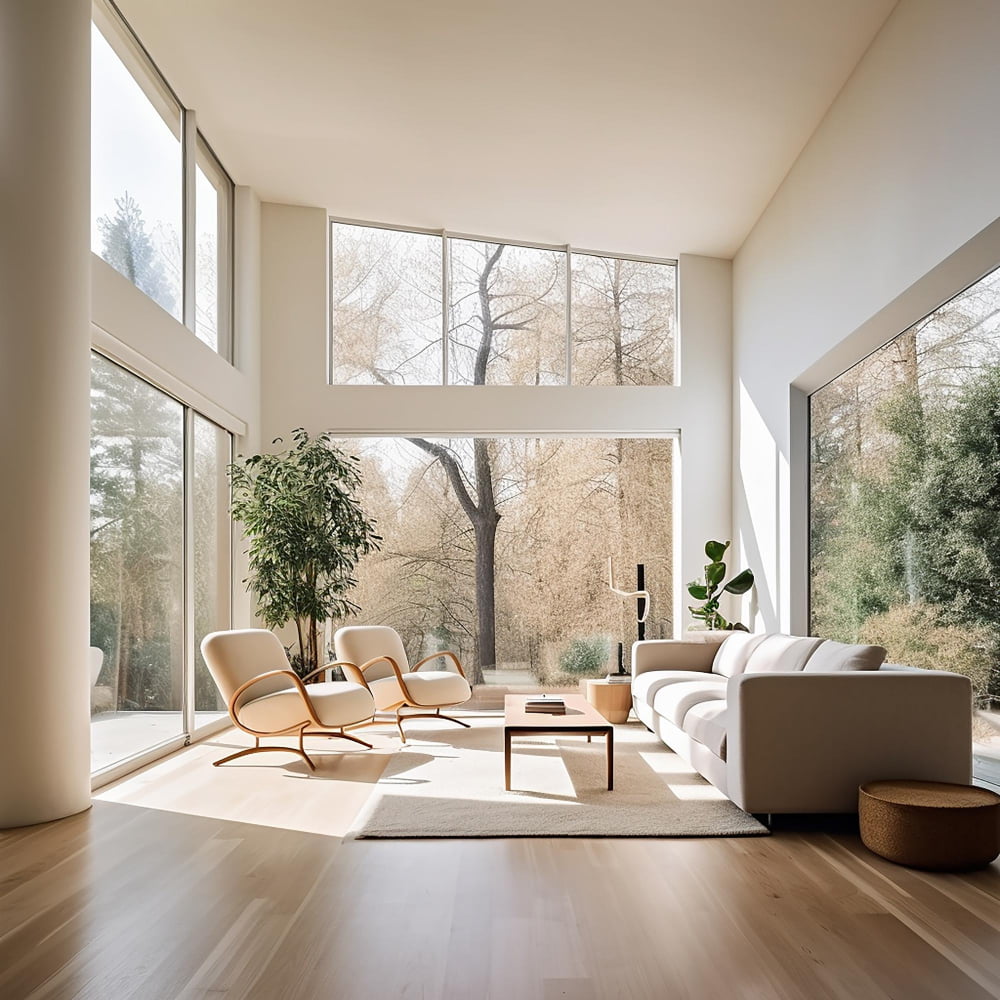
Striking the perfect balance between minimalism and comfort is a subtle art. At its core, a quiet luxury design demands that spaces appear uncluttered while retaining an inviting ambiance.
1. Use of Streamlined Furniture: Opt for pieces that create an open feeling. Think lower-slung couches, thin-legged tables, or floating shelves.
2. Quality over Quantity: A room filled with fewer, high-quality pieces, where each has its meaningful space, quiets the mind, revealing luxury in simplicity.
3. Textures and Layers: Add dimension and warmth to the minimalist space by incorporating rich textiles, unique rugs, or soft throw pillows that offer sensory delights without creating visual noise.
4. Implementing Subtle Color Schemes: Use varying shades of the same color to enhance comfort. Avoiding bold, contrasting colors maintains the minimalist approach, providing a visually calming experience.
5. Natural Light: Streamlined window treatments, like translucent roller blinds or simple drapes, encourage natural light flow for an airy, comfortable feel.
6. Ambient Lighting: For nighttime, incorporate dimmable lights. Soft lighting enhances quiet luxury and augments comfort.
Remember, achieving balance means understanding that less can be more. Through this understanding, your home can embody a serene, minimalist ambiance while still remaining comfortable and inviting.
The Use of Metal Accents in Quiet Luxury
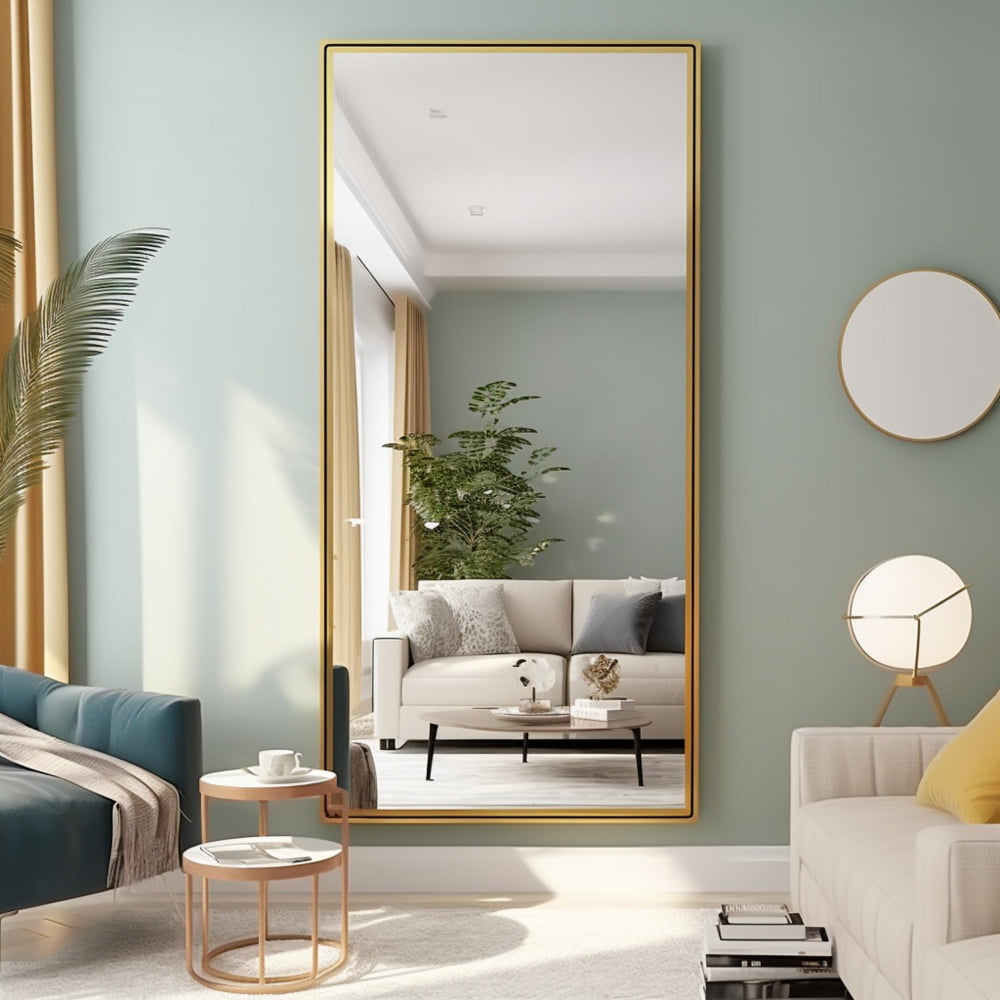
Metal accents are a subtle way to bring a sense of luxury to an interior without overpowering the overall aesthetic. Careful incorporation of these accents can lend a sophisticated touch while enhancing the existing design.
1. Refined Contrast: Metal accents, when juxtaposed against soft textiles or a neutral palette, create a delightful contrast. This helps in highlighting the room’s design elements.
2. Variety in Finishes: Whether it’s polished chrome, burnished copper, hammered brass, or antique bronze, the variety of metal finishes provides ample opportunities to layer textures, thus keeping the design interesting.
3. Focal Points: Strategically placed metal accents can serve as stylish focal points. An antique brass mirror frame, for example, can draw attention without being excessively flashy.
4. Intermixing Metals: Fearless blending of different metals in a space reflects a well-thought design, subtly infusing an air of luxury. However, it’s key to keep the mix balanced.
5. Lofty Ambiance: Metallic accents, as in the form of light fixtures, can effortlessly uplift the room’s atmosphere. It provides a blend of functionality and aesthetics.
Remember, the idea is not to saturate the space with metals but to use them thoughtfully as artistic touches that underscore the notion of quiet luxury.
Incorporating Quiet Luxury in Small Spaces
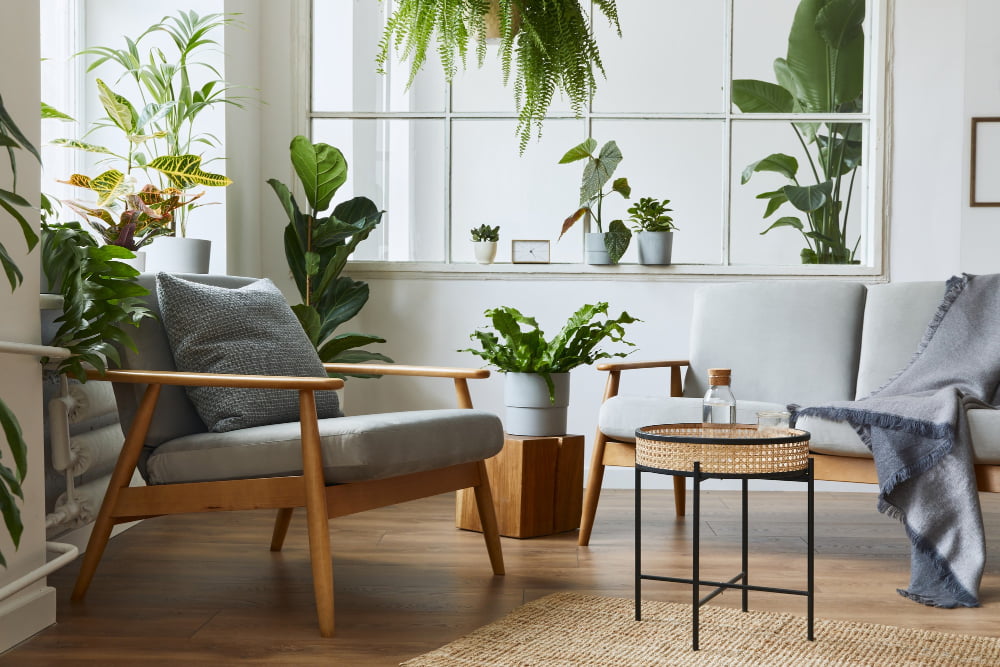
Small spaces are an ideal canvas for the quiet luxury aesthetic, emphasizing mindfulness and intentionality in every design choice. Start with a minimalist foundation by keeping only essential furniture and decor items. Free up floor space by opting for wall-mounted storage and choosing multi-functional pieces.
The color palette should lean towards neutrals, whites, or muted tones, contributing to the semblance of airiness. Incorporation of mirrors is a subtle trick to make spaces appear larger, playing into the quiet luxury’s preference for understated sophistication.
High-quality materials hold significant importance. Think lush fabrics, polished metals, or rich woods. The right textures add depth while maintaining that sense of serene simplicity, while investing in craftsmanship over quantity aligns with the lifestyle’s foundational principles.
Lush plants can provide a dash of color and soften straight lines. They add a sense of vitality and natural luxury, contributing to quiet luxury’s overall penchant for minimalism with a natural twist. Lighting, too, is crucial. Soft, layered lighting adds warmth and depth, enhancing the space’s quiet, luxurious feel.
Remember, the essence of quiet luxury in small spaces is less about filling every corner and more about curating a calm, soothing atmosphere where every item holds meaning and intention.
Understated Elegance: Emphasizing Details in Quiet Luxury
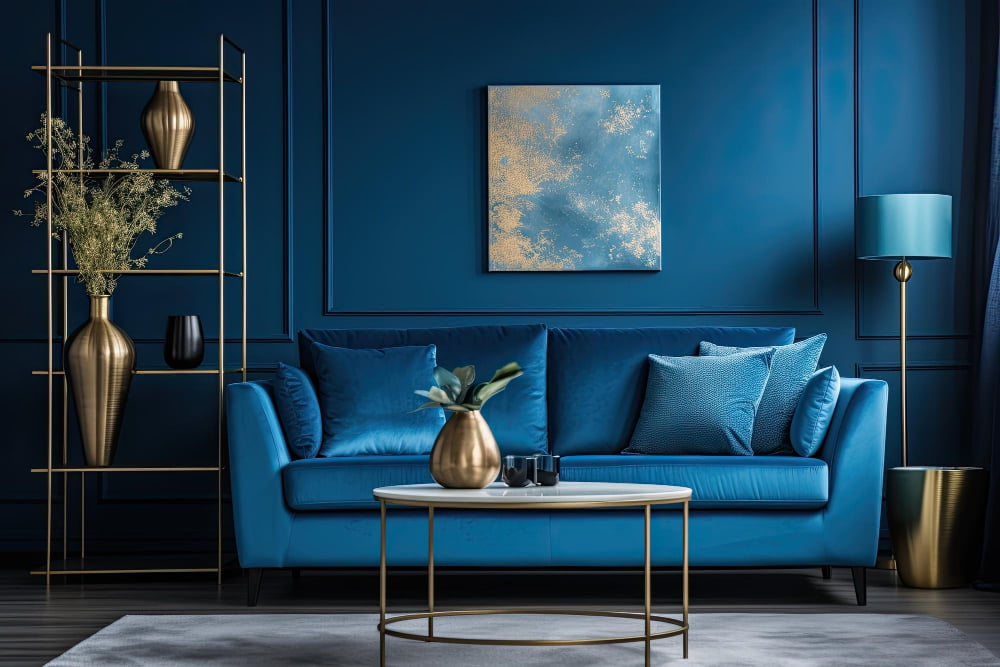
Quality materials pull their own weight in quiet luxury decor. Nothing shouts out loud; even gold or marble details remain unobtrusive thanks to their tasteful application. The allure isn’t in the radiance, but in the subtlety it adds to a room.
Take more than a passing glance at furnishings. Notice their smooth lines and the delicate balance of functionality with aesthetics. These aren’t merely objects; they’re thoughtfully crafted works of art, designed to bring both comfort and beauty into everyday living.
Textures, too, make a surprising difference. Silk cushions, warm wool throws, and cool, crisp linens strike a delightful contrast, awakening your senses to an understated, yet potent luxury.
Focus on the details. The humble stitching in a leather armchair or the soft sheen of a wooden dining table serves as quiet reminders of the meticulous craftsmanship and careful consideration that goes into each piece.
Incorporate antiques for a touch of historic luxury – a vintage mirror, an art deco lamp, or an old-world map. They silently narrate stories from a bygone era while adding a touch of intrigue.
In quiet luxury, details may whisper, but their message of elegance – when heard – resounds.
Quiet Luxury: The Blend of Simplicity and Opulence
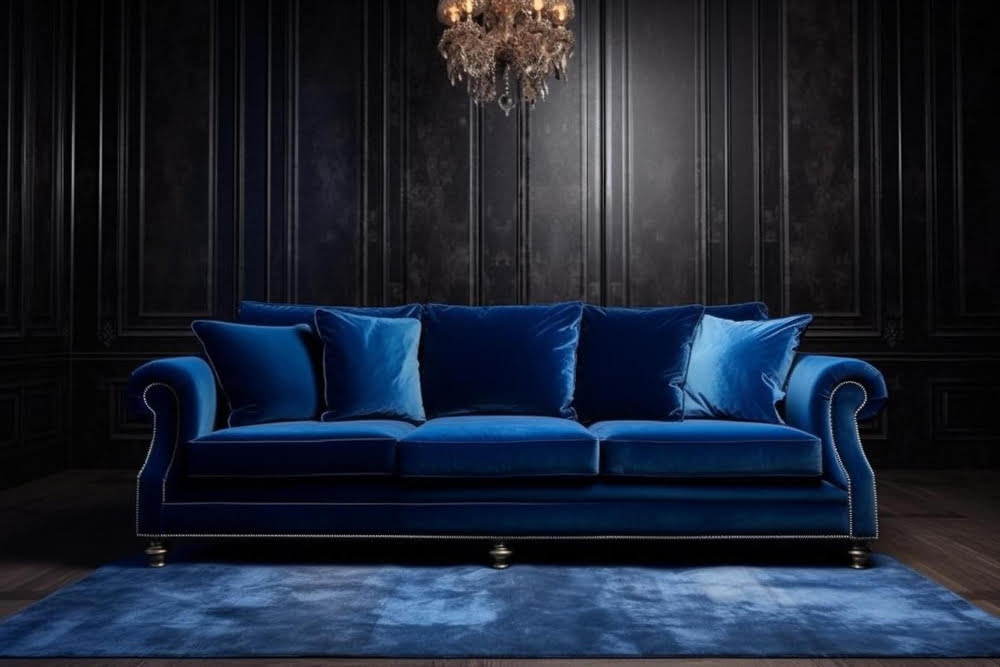
The fusion of simplicity with opulence sets the benchmark in quiet luxury. This design principle’s beauty lies in its ability to balance two seemingly contrasting elements. It is about stripping down to the essentials, and at the same time, shining a spotlight on exquisite, high-quality detailing and materials.
Here are a few key points:
- 1. Opt for streamlined furnishings with curvaceous details. This delivers a clean look without sacrificing visual interest. An effective example could be a minimalist velvet sofa with a tastefully embellished hardwood frame.
- 2. Choose materials that exude wealth but maintain a minimalist appeal. Think along the lines of marble countertops, silk drapes, or metallic accents that provide an understated richness.
- 3. Make illumination a priority. Sophisticated lighting fixtures offer an opportunity to amplify opulence while preserving a straightforward aesthetic. Wall sconces with clean lines or pendant lights with minimal design, for instance, add visual prize without overcrowding the space.
- 4. Large, open spaces are integral to creating the minimalist aspect. This affords room for the opulent pieces to narrate their stories without getting lost in clutter.
- 5. Let subtlety reign. An extravagant artwork or a statement chandelier can exude luxury without the need for additional ornate accessories.
Remember, the magic of quiet luxury lies in the seamless union of the apparently simple with the distinctly opulent. It’s all about achieving the calming atmosphere of minimalism while relishing in the allure of luxury.
The Relationship Between Quiet Luxury and Feng Shui Design
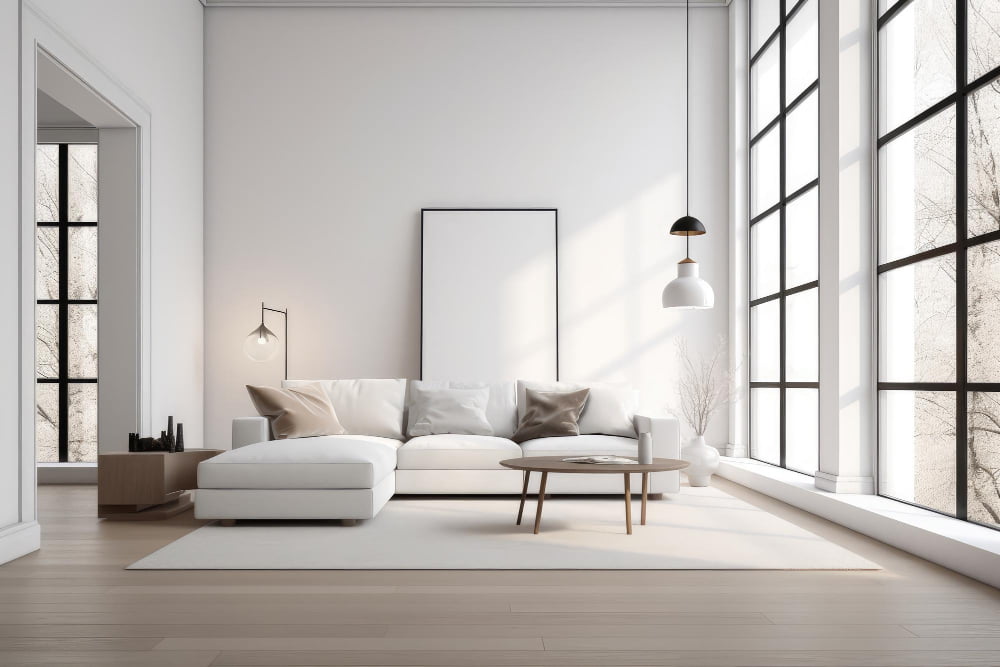
Considered an ancient Chinese art of placement, Feng Shui draws a significant alignment with quiet luxury. Broadly based on the philosophy of creating balance and harmony, these two design concepts share core values.
First, they both emphasize the need for a clean, clutter-free environment. A less-is-more approach encourages a sense of tranquility and simplicity.
Next, natural elements and their representation hold a key place. Wood, metal, fire, earth and water elements contribute to a serene atmosphere. These can be incorporated through choice of furniture, color palette, or accessories.
Importantly, open spaces are seen as opportunities, not voids that call for filling. They allow energy— ‘Chi’ in Feng Shui parlance— to flow freely, enhancing relaxation and ease.
Moreover, both principles recommend furniture placement that promotes efficient flow and functionality, rather than filling up spaces just to inhabit them.
Lastly, high-quality materials and well-crafted furniture are preferred, marrying functionality and aesthetics, underlining the quiet sophistication of space.
Quiet Luxury: Ideal Furniture Pieces
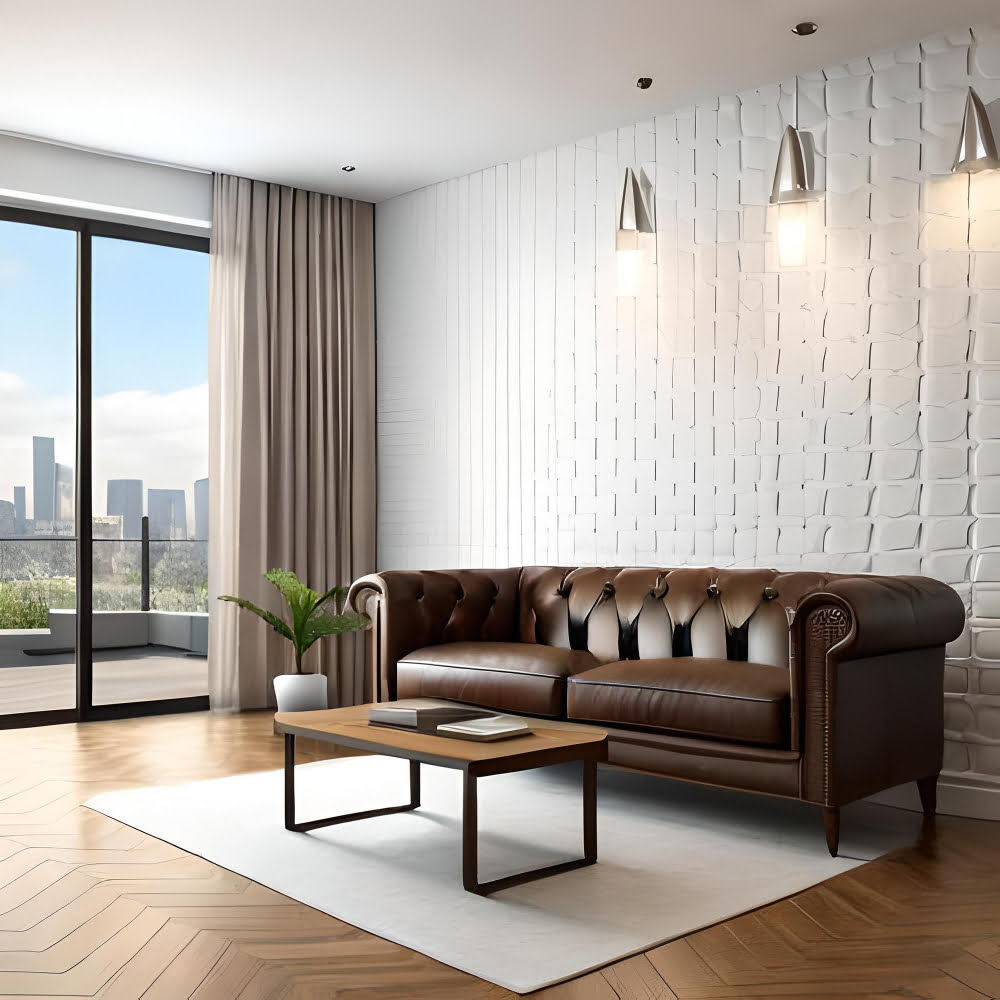
When selecting furniture for a quiet luxury design scheme, prioritizing function and form are key considerations. Classic, timeless pieces in clean lines and understated shapes make for a sound investment, enhancing the minimalist appeal of the space while delivering practicality and comfort. Materials such as smooth, polished wood, soft velvet, gentle linen, and ethereal glass embody the alchemy of luxury and simplicity.
Embrace the beauty of raw, natural textures – think of a sleek marble coffee table or a sculpted wooden stool. Each piece should possess an air of quiet sophistication but also exude understated warmth, ensuring the living space doesn’t come off as cold or sterile.
Invest in furniture that speaks the language of elegance without shouting, such as a sleek Chesterfield sofa, a slender oak console, or a low-profile platform bed. Such pieces help foster an environment of serene opulence without compromising on functionality. Remember, in the realm of quiet luxury design, less is more; a few purposefully chosen furniture pieces can create a deeper impact than a room full of furnishings.
Creating a Serene Atmosphere With Quiet Luxury Design
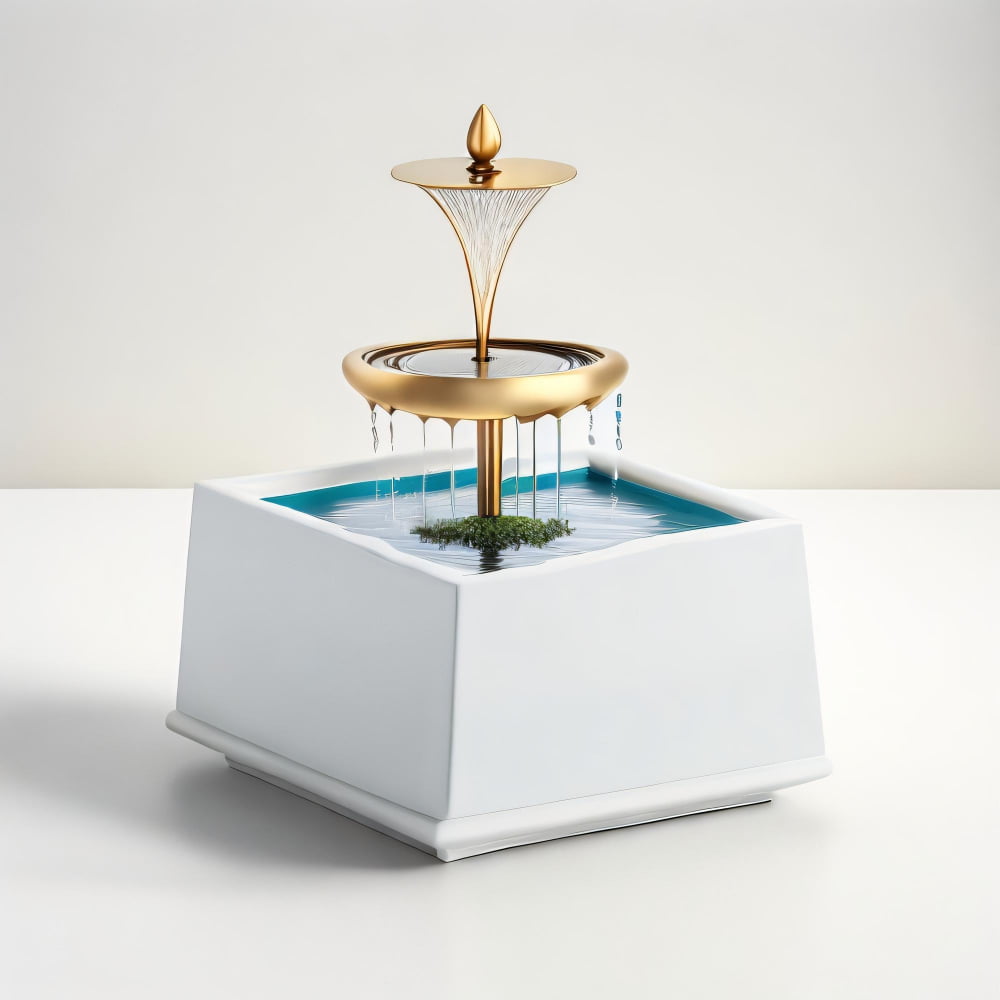
Invest in high-quality, minimalist furniture. Comfort and simplicity are key to creating a calming environment. Items with clean lines and natural materials invite peace and relaxation.
Incorporate natural elements for a serene touch. Indoor plants, nature-inspired artwork, and water features all contribute to a tranquil atmosphere.
Opt for a muted color palette. Soft neutrals, pastel hues, and plenty of white space soothe the senses and avoid visual clutter.
Control the lighting. Soft, warm glows from table lamps and floor lights, coupled with natural light in the day, imbue the space with a comforting ambience.
Focus on subtle, tactile materials. Handwoven throws, silk curtains, or a sheepskin rug add layers of quiet, luxurious comfort.
Minimize clutter. A clutter-free space is calming. Choose functional, sleek storage to maintain this effect.
Remember, quiet luxury design invokes serenity by unifying quality, simplicity, and natural beauty. Each element added is purposeful, contributing to the overall peaceful, refined aesthetic.
Using Textiles in Quiet Luxury Interiors
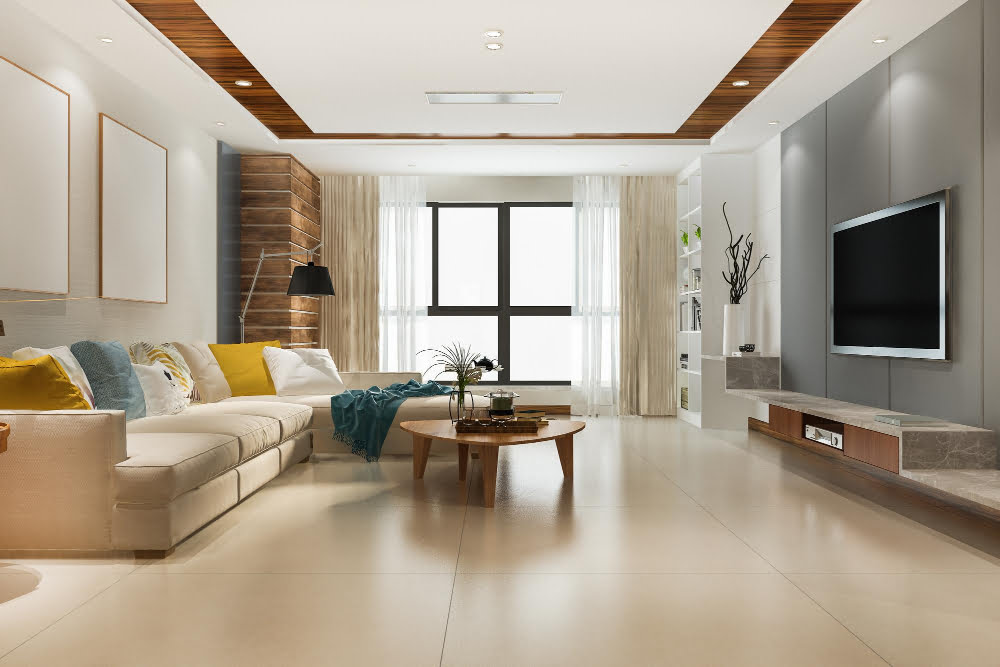
Textiles play a pivotal role in establishing a luxurious ambience without pronounced ostentation. Opting for natural fabrics like linen, silk, or wool can impart a sense of opulence through texture instead of flashy design. They also add a tactile dimension to the aesthetics, inviting touch and interaction.
1. Embrace Monochrome: Employing a monochromatic color scheme for textiles allows for focus on texture and quality of the materials used. This simplicity subsequently enhances the overall luxurious feel.
2. Seek Texture Variation: Incorporating variety in textile textures can create subtle visual interest. Combining plush rugs with smooth silk curtains, for instance, can ensure an engaging mix.
3. Quality Matters: High-end quality textiles speak volumes about quiet luxury. Expensive doesn’t necessarily mean extravagant, but rather well-made and enduring.
4. Subtlety Commands Attention: Understated patterns or color accents on textiles can drive interest without being loud. Subtle detailing can arrest the eye and ensure an elegant aesthetic.
5. Layer for Luxury: Layering different textiles gives your interior design depth and coziness. An expertly draped throw, for example, can transform a simple chair into an inviting retreat.
6. Opt for Handmade: Handmade textiles often embody a unique charm. Their subtle imperfections bring in authenticity and humility, key components of quiet luxury.
Quiet Luxury: The Art of Selective Decoration
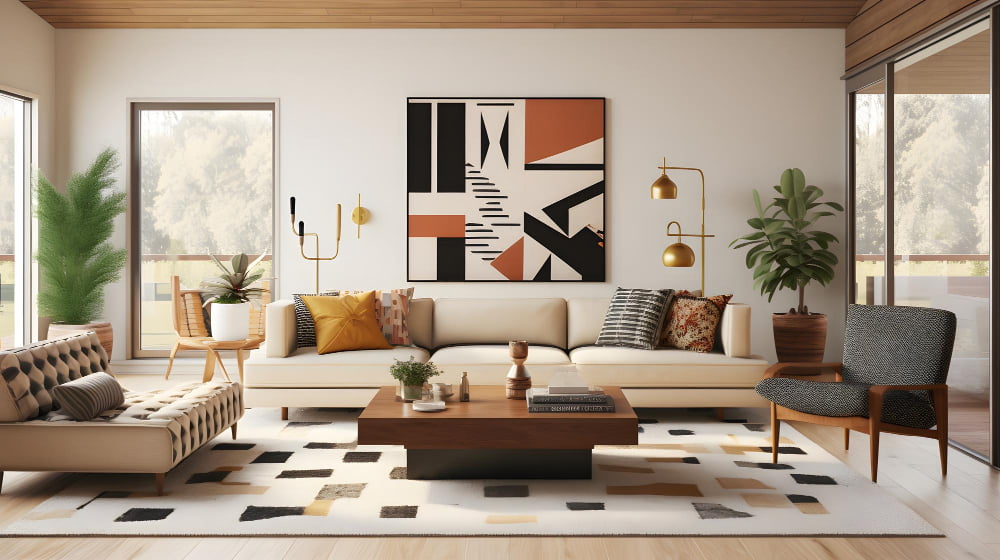
Dictating elegance with less, selective decoration is one of the primary tenets of quiet luxury. This nuanced approach implies careful choice, placing fewer items of higher quality in a space rather than leaning on excess.
To materialize this, first consider the quality and impact of each piece. A beautifully crafted, antique mahogany table can become the centerpiece, dictating the style and tone of the room. The focus is on each piece to breathe, seen and appreciated in its entirety, its craftsmanship highlighted instead of being overshadowed by clutter.
Understated artworks, geometrical or abstract pieces, can be utilized to bring a dash of personality and flare. Again, remember, the aim is to have fewer pieces, each with the power to make a distinct statement.
Lighting also plays a pivotal role. Thoughtful and strategic lighting adds depth, casting shadows that highlight textures and bring out the unique characteristics of your carefully selected pieces.
Remember that each item in your space is a star in its own right. The art of selective decoration asks for each piece to shine, bringing a gentle, understated opulence to your living space. Explore, take your time, and select the items that resonate a tranquil and subtle sophistication.
Why Quiet Luxury Prioritizes Quality Over Quantity
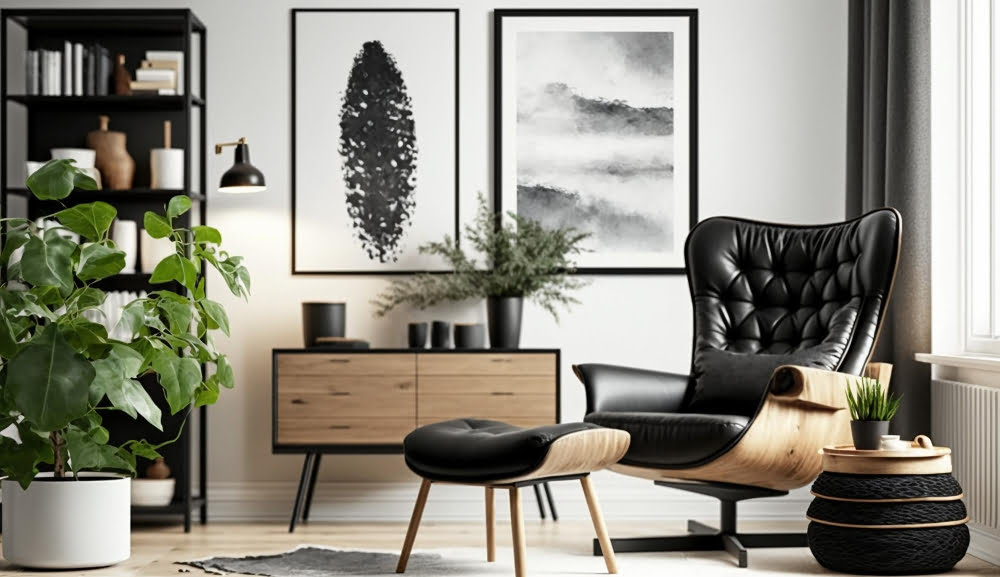
In the realm of quiet luxury, one can observe a distinct inclination towards long-lasting, durable items, leaving behind the alluring, ephemeral trends. The emphasis is on authenticity, investments in pieces that age gracefully. A beautifully weathered antique table may hold a place of honour over a shiny, mass-produced one. The backstory, quality and uniqueness of a piece, promotes it to a treasured object.
Moreover, the principle of cherishing each item simplifies our space, freeing it from the unwanted clutter. Fewer items of greater value result in cleaner lines, a more harmonious aesthetic and an overall calming ambiance.
Additionally, it’s about artisanship, wherein beauty lies not in flamboyance but meticulously created details. A painting isn’t mere colour on a canvas, but the artist’s lifetime of study and observation. Similarly, interiors aren’t rows of furniture, but a reflection of the dweller’s refined taste and lived experiences.
Lastly, there’s the aspect of sustainability, something that automatically comes to play when choices shift from ephemeral to enduring. By accumulating fewer but higher quality objects, it paves the way towards a more conscious consumption pattern, a nod towards a more ecologically-responsible lifestyle.
This essentially underlines the timelessness of quiet luxury – a style that grows with the dweller, enhancing every passing year.
The Role of Antiques in Quiet Luxury Design
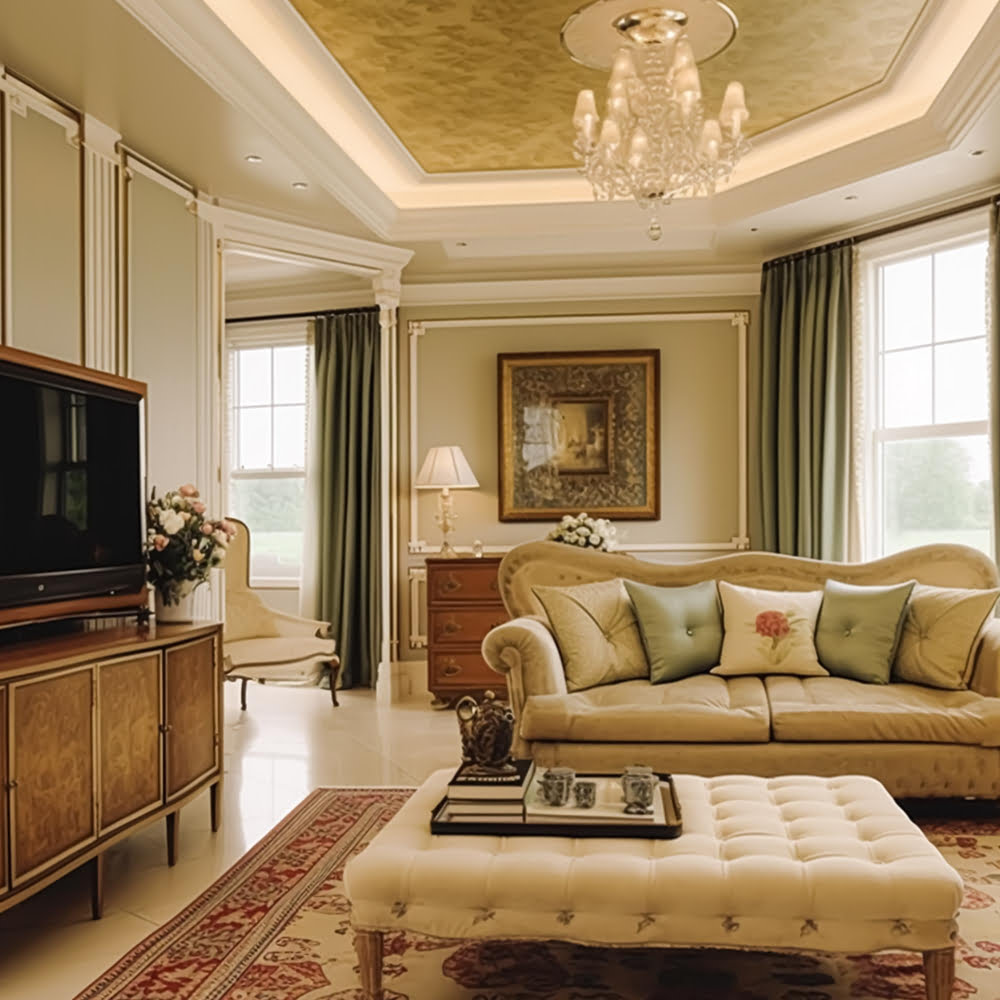
Incorporating antiquities and historical items marries well with the ethos of a quiet luxury interior. The selected pieces must be elegantly understated and bear characteristics of fine craftsmanship. They serve as sophisticated anchors that ground the overall design layout while introducing an element of timelessness.
1. Carefully selected antiques add depth and evoke a sense of journey, inviting intrigue without overwhelming the calm ambiance.
2. Stand-out pieces should not be ostentatious, rather defined by quality and complex detail. An intricately carved wooden table or an art-deco lamp are excellent examples.
3. Mixing contemporary with antique lifts the setting from being purely modern. This grants the design a unique blend, characterized by grace and savoir-faire.
4. For the choice of antiques, opt for practical items that can be incorporated into daily use. By doing this, they add functionality while enhancing aesthetic appeal.
5. Space each antique item, give them room to breathe and allow them to demand the attention they deserve.
Restraint plays a key role when using antiques, striking the right balance is core. The inclusion of historical objects should always aim to uphold the serene atmosphere that is the cornerstone of quiet luxury.
Quiet Luxury in Architectural Details
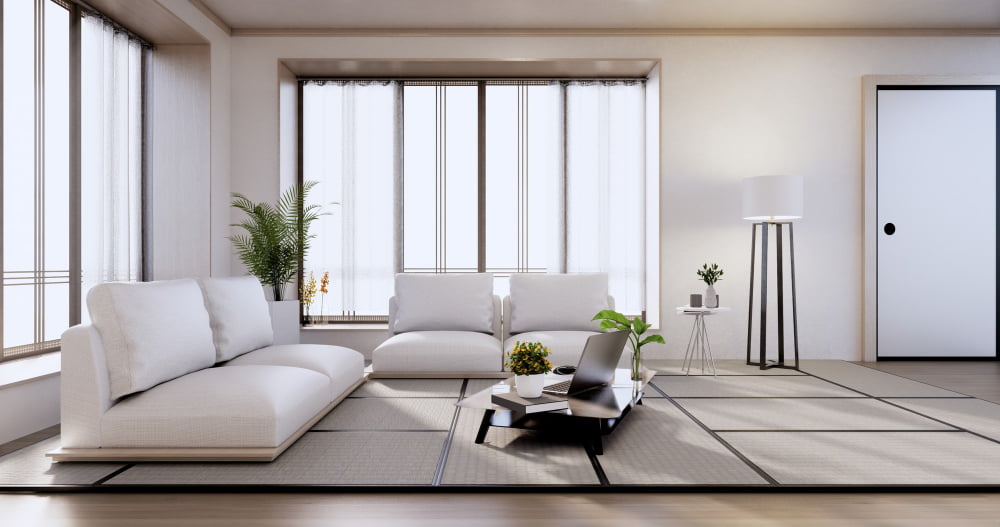
Subtly and elegance personify the architectural details in quiet luxury. Key characteristics include the use of clean lines—streamlined, uncluttered, and minimalistic—that foster an aura of tranquility without compromising visual sophistication. Seamless integration of technology, providing modern conveniences without disrupting aesthetics, equally contributory to this design ethos.
Attention to high-quality materials comes to the fore, with generous use of natural stones and woods, glass, and polished concrete. These exude refinement while marrying the aesthetics to the broader natural ambience. Intricate detailing, such as thoughtful joinery, the choice of discrete but precision-engineered fittings, and underplayed but exquisite moldings, become essential considerations.
Lighting design forms an integral part in defining these interiors. It not only emphasizes the architecture but also adds depth to the space, triggering emotions, and bringing coziness. Incorporation of large windows and skylights, flood the interiors with natural light, enhancing the sense of openness and minimalism.
To elevate the beauty of the design, consideration goes beyond the indoor landscape. The trend leans toward an open floor layout, creating a fluid transition between interior and exterior spaces. It allows the house to blend with the surrounding environment, forming a connection between architecture and nature, offering a tranquil, yet luxurious living experience without being ostentatious.
Harmony and Balance in Quiet Luxury Design
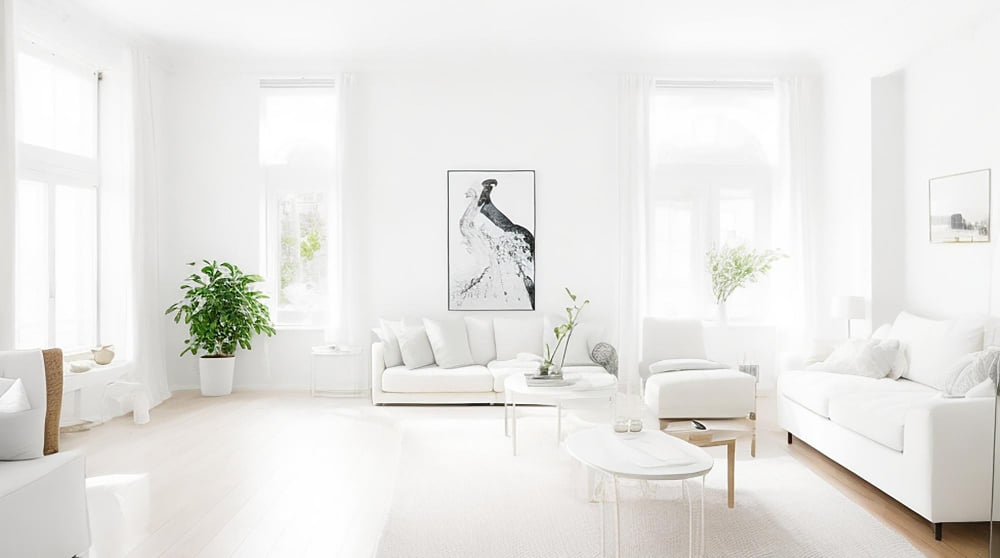
Striking the right chord between form and functionality constitutes the essence of harmony and balance in quiet luxury design. A careful selection of furniture, artwork, and decor accessories is mandatory in creating a visually appealing and functional space.
Notably, symmetrical arrangements are a safe bet for instilling harmony as essentially, they are pleasing to the human eye. Consider aligning your furniture around a central focal point for an immediate sense of order.
Balance, however, is not solely about symmetry. An asymmetric layout can achieve balance through a thoughtful mix of different sizes, colors, textures, or patterns. For instance, placing a large piece of artwork on one side of the room? Counterbalance it with a group of smaller framed photos or a tall floor lamp on the opposite side.
An appropriate color palette also significantly contributes to the harmony of a space. Soft, monochromatic schemes develop a peaceful ambience, ideal for quiet luxury. Be sure to include visual texture as well to prevent a monotone and sterile environment.
Don’t forget the principle of scale! Proportion and scale ensure that the furniture and decor elements relate well to each other and the architecture of the room.
Remember, in quiet luxury design, achieving harmony and balance is synonymous with creating spaces that welcome relaxation and tranquility.
Incorporating Personal Style in Quiet Luxury Design
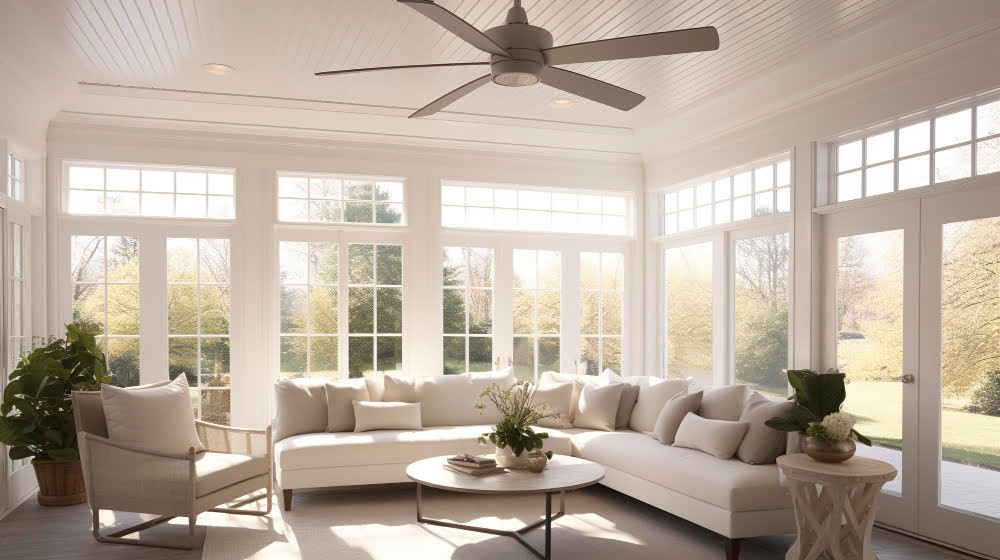
Embracing personal style breathes life into an otherwise minimalist luxury aesthetic. First, identify key pieces with emotional or aesthetic appeal. This could range from a classic heirloom table to a modern piece of wall art.
Next, find a prominent but fitting spot for these pieces, making them standout features but not dominating the space.
Incorporating personal style shouldn’t disrupt the harmonious balance of the space. Mix and match textures, patterns and materials in a way that complements the overall design. Choose items of varying aesthetics but similar color schemes to ensure continuity.
Finally, adapt the selection of furniture and accessories. Use preferred patterns, textures and colors to add depth. Remember, it’s a delicate balance of personal style and the understated elegance of quiet luxury. It’s about creating a space that feels authentic and luxurious, still preserving just enough minimalism to evoke tranquility.
Pieces should not just fill a room, they should tell your story while coexisting in an environment that is restful and serene.

